Plants to Reward Patience
 At the 2011 Scott Associates Plant Sale, we are celebrating the 40th anniversary of the Scott Associates, our arboretum member and volunteer program. Planting for the next 40 years in your gardens can be a difficult concept. That timeframe may be a stretch for many of us, but it is fair to say good plant selection yields long-term rewards.Plus, thoughtful landscaping benefits property values and creates a legacy.
At the 2011 Scott Associates Plant Sale, we are celebrating the 40th anniversary of the Scott Associates, our arboretum member and volunteer program. Planting for the next 40 years in your gardens can be a difficult concept. That timeframe may be a stretch for many of us, but it is fair to say good plant selection yields long-term rewards.Plus, thoughtful landscaping benefits property values and creates a legacy.
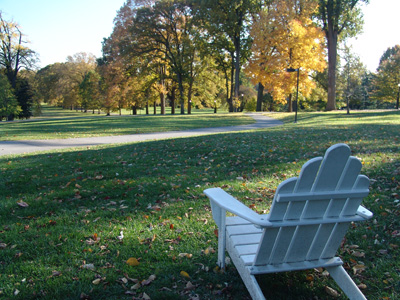
With patience, the swamp white oaks of Magill Walk have matured into a striking alley. photo credit: R. Maurer
“Some components of a garden design offer an instant hit or they hit the ground running,” says Scott Arboretum Curator Andrew Bunting. “But there are plants where it takes a bit of patience for them to fully realize their true attributes. And that is really the ultimate gratification for a gardener—to nurture a plant through a number of seasons and see its development unfold.”
With that philosophy in mind, and in keeping with our 40th anniversary theme, Andrew identified some examples of plants that reward patience:
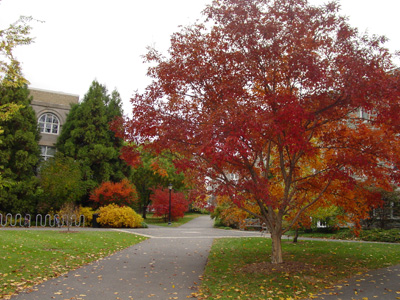
Wonderful fall color of Acer triflorum. photo credit: M. Blandford
Acer triflorum will develop into a beautiful small specimen tree with tawny peeling bark and wonderful sugar maple-like fall color.
Camellia japonica ‘Korean Fire’ is a perfectly hardy selection for the Delaware Valley. Over time it will reach 15 feet tall and will be adorned in early spring with deep red flowers.
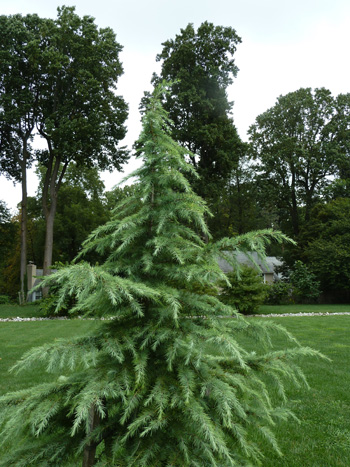
Cedrus deodora 'Silver Mist' has lovely silver-green foliage. photo credit: J. Coceano
Cedrus deodara ‘Silver Mist’ will develop into a majestic specimen conifer with silver-green foliage and arching branches.
Cercidphyllum japonicum ‘Morikawa Weeping’, a weeping form of katsura, becomes more and more elegant with time. The long weeping branches create a stunning cascading habit with remarkable golden fall color.
Chionanthus retusus ‘China Snow’, like all Chinese fringetrees, becomes more and more spectacular with age. At maturity it will reach 25 feet tall with an equal spread. In May it will be adorned with feathery white flowers.
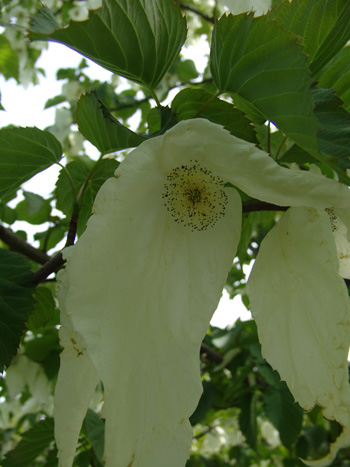
The distinquishing white bracts of Davidia involucrata. photo credit: R. Maurer
Davidia involucrata ‘Sonoma’ is a relatively new selection of the dove tree, which has larger than normal white bracts. Davidia is unequaled for its significant flowers in the spring.
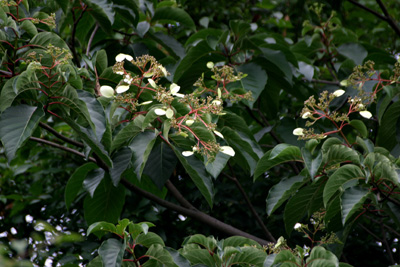
The white bracts of Emmenopterya henryi. photo credit: D. Mattis
Emmenopterys henryi remains one of the rarest trees in cultivation. This upright tree requires at least twenty years of growth before it comes into flower, but once this occurs you will be treated to stunningly large white bracts in July that look as if they are hovering over the branches.
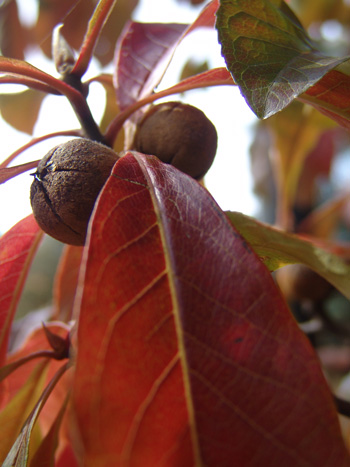
Stunning fire-engine red fall color of Franklinia alatamaha. photo credit: R. Maurer
Franklinia alatamaha is a plant for all seasons. In the summer, it is covered with large, white, camellia-like flowers; the fall color is a stunning fire-engine red; and the stems have interesting grey and white striations for winter interest.
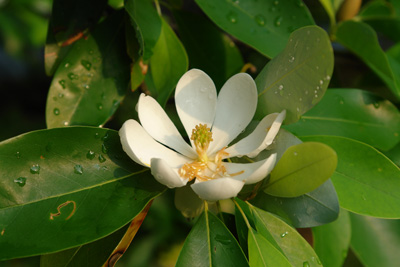
Magnolia virginiana var. australis 'Henry Hicks' has intensely fragrant flowers. photo credit: ML Gessel
Magnolia virginiana var. australis ‘Henry Hicks’ was selected by Scott Arboretum’s own Dr. Wister because this sweetbay magnolia is nearly evergreen in the Philadelphia area. Sporadically throughout the summer it has intensely fragrant flowers and is one of the few magnolias which will tolerate wet soils.
You can get full descriptive and cultural information on the plants Andrew mentioned—indeed on all selections, in advance—from the Plant Sale Handbook.
A final note on patience:
Biggest is not always best when it comes to purchasing plants. Large multi-gallon container plants or balled-and-burlapped plants do not necessarily succeed better than smaller container plants. All transplants take time to settle in and establish a good root system. A small container plant may have a quicker period of root adjustment, and after a few years of growth it may be equal in size to its multi-gallon cousin.
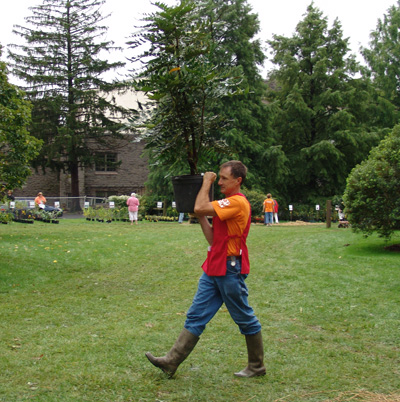
Plant experts helps shoppers at the Scott Associates Plant Sale choose the best plants for their garden. photo credit: J. Goren
Read about planting a tree on page 57 in the Plant Sale Handbook or discuss planting methods with a plant expert at the 2011 Scott Associates Plant Sale. We want your gardening patience to be rewarded.
==================== >< ===================
Ted Patterson, from Wayne, PA, retired from public relations work with the U.S. Dept. of Agriculture, is a co-chair of the woody plant section at the Scott Associates Plant Sale.





No Comments